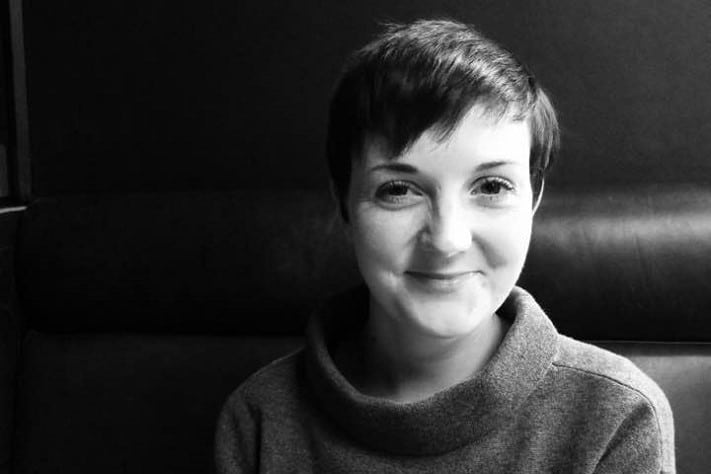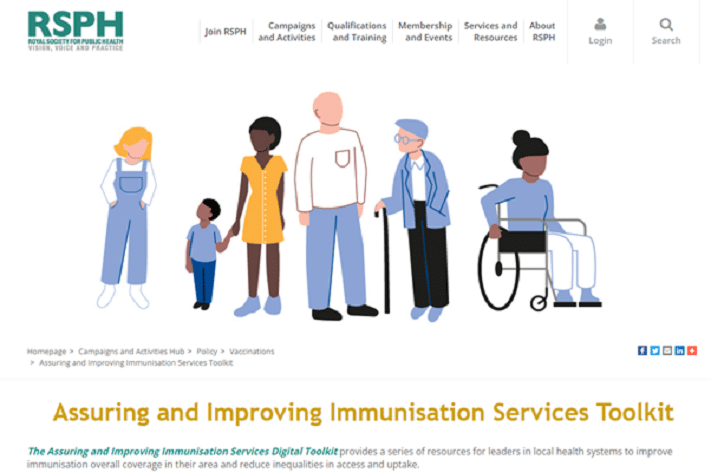4th February 2022
We are delighted to share this blog by Florence Gildea, Programmes Executive at the Royal Society for Public Health (RSPH), to support today’s launch of a new web-based toolkit of resources for public health leaders to promote and support immunisations. Florence’s work at RSPH focuses on creating healthy environments and equipping the wider public health workforce to better support people’s wellbeing.

Florence Gildea, Programmes Executive at the Royal Society for Public Health (RSPH)
Since 2020, there has never been so much talk of vaccinations. The public was on tenterhooks during the trials of the COVID-19 vaccines, eagerly waited to be invited for their first dose, and has then ridden a rollercoaster ride of public health campaigns and celebrity endorsements, disinformation and misinformation, and questions about the efficacy and duration of protection. Yet, with all the focus on COVID-19 vaccinations, many may not have noticed that 2021 saw another year-on-year drop in childhood immunisation coverage rates.
As phenomenal as the efforts have been to roll out the COVID-19 vaccines and the booster dose, we need a sustainable and resilient immunisation system – one where all partners work together and all members of the wider public health workforce, including health visitors, are able to play a part.
Health visitors’ unique position
Health visitors have a unique position when it comes to speaking to parents and carers about child vaccinations – they are a universal service, coming into contact with every family in the country, and able to build up trust through regular visits, often in the family’s own home. Part of their role is to talk to parents and carers about what vaccinations their baby needs, when and where to get them, and to answer any questions they might have. We know that information from a healthcare professional is the best way to overcome vaccine hesitancy, and so health visitors have an unrivalled opportunity to do so before any doubts become entrenched.
Cuts to health visiting services, however, imperil that opportunity. As health visitors’ time with parents is reduced due to workforce capacity issues, they are less able to fully assuage a parent or carer’s concerns, or to follow up with those who miss their vaccination appointments. Health visitors are also victims of the fragmented immunisation system: they are employed by the Local Authority but, as childhood vaccinations themselves are delivered mainly within primary care, it is not necessarily straightforward to work collaboratively with the local GP Practice.
New RSPH web-based toolkit
To help local systems work more closely together to support immunisations, the Royal Society for Public Health has produced a web-based toolkit of resources for public health leaders to gain assurance of, and improve access to, immunisation services. This includes resources for: gaining assurance from providers; supporting school-age immunisation services and travel vaccination services; developing communications about vaccinations; engaging with communities to understand their beliefs about, and barriers to accessing, vaccinations; and building collaborative relationships across systems.
Partnership-working around immunisations
One of the aims of the toolkit is to encourage partnership-working around immunisations, and we make specific recommendations for what that could look like. For example, we suggest that GP practices liaise with local health visitors to understand barriers which families may face in accessing vaccination appointments at their practice and make changes accordingly. We also recommend that they grant health visitors access to the medical records of the babies and children they’re supporting, so they can easily check their vaccination status and encourage vaccine uptake when appointments have been missed.
Health visitors have a wealth of knowledge about the health and wellbeing of families in their area which could feed into service improvement, not just within individual practices but across the whole ‘place-based’ local system. To benefit from this intelligence, we recommend that local public health teams work with health visiting managers to collect and analyse local information, and run regular reports on inequalities in uptake, common concerns and barriers to access. This information could be fed back into the wider system, including commissioners and providers, and would inform a continuous cycle of quality improvement to improve vaccination uptake.
Crucial workforce
As well as providing vital information about reasons behind local inequalities in vaccination coverage, health visitors should be recognised as a crucial workforce in reducing them. For instance, specialist health visitors serving families who are experiencing homelessness can be equipped to ensure those at risk of the poorest health outcomes are able to access the full range of services they need, including vaccinations.
Similarly, by commissioning vaccinations to be delivered alongside child health clinics, any barriers, psychological or physical, to arranging and accessing an appointment are reduced. The connection between having a conversation about vaccinations and the ability to receive them is direct, and the health visitor can confer the trust which they have developed with the family onto the vaccinator.
The COVID-19 pandemic brought an unprecedented amount of misinformation and disinformation about vaccines, and a fall in the uptake of other routine immunisations. Health visitors will be tackling the legacy of this long after the COVID-19 vaccination programme is complete as they encourage families that vaccinations are safe, effective and necessary.
We hope our toolkit encourages local public health leaders to engage with, resource and support health visiting services so that every baby and child gets the protection from vaccine-preventable diseases that they need.









